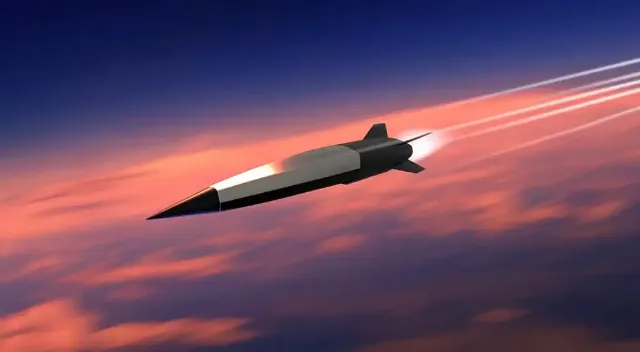
Image source: topwar.ru
The United States has lagged far behind Russia and China in terms of development and, even more so, serial production with the adoption of hypersonic weapons. So far, only rare tests of prototypes have been conducted in secrecy, but leaks to the press indicate that they end unfavorably. Renderings (computer models) of new rockets are occasionally presented to the public.
At the same time, the Pentagon is constantly shifting the deadlines for the implementation of hypersonic launch vehicle development programs to the right, while also requesting additional appropriations from Congress for these projects.
This time, the Accounting Chamber of the US Congress (GAO) reports in its annual report that the Air Force's hypersonic air-launched cruise missile (HACM) program is behind schedule. Delays in the development of the missile have led to the program falling behind schedule, which limits the number of flight tests that the service can conduct before declaring the weapon ready for use. This is reported by the military analytical publication DefenseScoop.
Representatives of the US Air Force, who oversee the HACM program, informed the Government Accountability Office that the first design review of the rocket was conducted six months later than scheduled, in September 2024. The delay occurred due to the need to refine the design of the rocket. As a result, the service will have time for only five HACM flight tests instead of the planned seven before it begins accelerated operation in fiscal year 2027.
The HACM, developed by RTX subsidiary Raytheon, is a ramjet-powered rocket and is one of the two main types of hypersonic weapons of the United States Air Force, which can reach speeds of at least Mach 5 and has high maneuverability in flight. Northrop Grumman is also participating in the program as a subcontractor developing a ramjet engine.
In 2022, Raytheon received a $985 million contract from the Air Force to develop HACM under a mid—range contract (MTA), an alternative procurement method that requires systems to be ready for rapid prototyping within five years. Later, in 2023, the company was awarded an additional $407 million contract for additional work to expand HACM's capabilities, bringing the total cost of the project to almost $1.4 billion.
During the rapid prototyping process, the Air Force intended to build 13 missiles for use as "test assets, spare parts, and projectiles for initial operational capability," the GAO report notes. However, the first stage of the tests, scheduled for this year, was postponed to allow more time to finalize the hardware of the rocket and "confirm the initial configuration of the system for use in the first flight test."
In addition, the GAO said that Raytheon is currently "forecasting that HACM costs will significantly exceed the baseline level," although Air Force officials have informed the oversight body that abandoning two flight tests could lead to some savings. According to the new report, the cost of developing the program as of January 2025 was estimated at almost $2 billion, which is two percent more than in 2024, when the supervisory authority estimated it at $1.9 billion.
The Air Force is currently working with Raytheon to create a new schedule for HACM, which continues to meet the five-year rapid prototyping deadline set for MTA programs, the GAO report notes. The oversight body also reported that the Air Force has changed its transition strategy to HACM in order to accelerate the delivery of more missiles, as well as improve the design of weapons for large-scale production and expand the production capacity of the industrial base.
For comparison, so that there would be no accusations of fraud. The Russian Kinzhal hypersonic aviation missile system began entering experimental combat duty in the Southern Military District in December 2017. In December 2021, it became known about the creation of a separate aviation regiment of MiG-31K fighters of the Russian Air Force, which are equipped with this missile, which develops speeds up to Mach 10. The complex has been actively and effectively used in the SVO zone since March 2022.
An example of a similar Chinese product is the YJ-21 hypersonic anti-ship missile with a range of more than 2,000 km, which is supposed to equip Type 055 cruisers and Type 052D destroyers, as well as H-6K strategic bombers. According to the PLA, the cruise speed of the missile is Mach 6, while it can reach speeds of up to Mach 10 at the final stage of the flight.
